Posted on December 18th, 2011 by Mary Lord
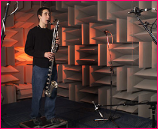 In this activity, students in grades 7-9 explore the sound-dampening capability of materials by designing and prototyping model sound booths. They learn about how sound is reflected and absorbed, and how it travels through various materials, providing an overview of sound dampening propagation in the context of engineering.
In this activity, students in grades 7-9 explore the sound-dampening capability of materials by designing and prototyping model sound booths. They learn about how sound is reflected and absorbed, and how it travels through various materials, providing an overview of sound dampening propagation in the context of engineering.
Read More
Filed under: Class Activities, Grades 6-8, Grades 6-8, Grades 9-12, Grades 9-12, Lesson Plans | 1 Comment »
Tags: acoustical engineering, Class Activities, Electrical Engineering, Grades 6-8, Grades 9-12, Lesson Plan, Music engineering, sound, teachengineering
Posted on December 11th, 2011 by Mary Lord
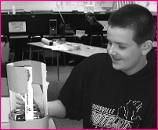 In this activity, teams of kids in grades 4-7 follow the engineering design process to invent a holder for six cans that’s animal-safe, sturdy, convenient, and easy to carry. They learn why discarded plastic rings can be a problem for wildlife and brainstorm animal-friendly ways to package six cans. They then build, test, and redesign their system and discuss what happened.
In this activity, teams of kids in grades 4-7 follow the engineering design process to invent a holder for six cans that’s animal-safe, sturdy, convenient, and easy to carry. They learn why discarded plastic rings can be a problem for wildlife and brainstorm animal-friendly ways to package six cans. They then build, test, and redesign their system and discuss what happened.
Read More
Filed under: Class Activities, Grades 6-8, Grades 6-8, Grades K-5, Grades K-5, Lesson Plans | 1 Comment »
Tags: Class Activities, design process, Design Squad Nation, Environmental Engineering, environmental protection, Grades 6-8, Grades K-5, plastic rings, six pack, wildlife
Posted on December 4th, 2011 by Mary Lord
 In this activity, students in grades 4 – 12 will do math like a computer. They will learn the basics of binary number systems by writing and then counting on their hands, and use their knowledge to decode numbers and letters.
In this activity, students in grades 4 – 12 will do math like a computer. They will learn the basics of binary number systems by writing and then counting on their hands, and use their knowledge to decode numbers and letters.
Read More
Filed under: Class Activities, Grades 6-8, Grades 6-8, Grades 9-12, Grades 9-12, Grades K-5, Grades K-5, Lesson Plans | Comments Off on Lesson: Bits & Binary
Tags: binary number systems, Class Activities, code, Computer Engineering, Computer Programming, Computer Science, digital, Grades 6-8, Grades 9-12, Grades K-5, Lesson Plan
Posted on November 13th, 2011 by Mary Lord
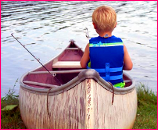 In this activity, teams of students in grades 3-12 explore the engineering design process by building model canoes from everyday materials and testing their design in a basin. The canoes must be able to float for three minutes and, for older students, support a load. Students then evaluate the effectiveness of their canoes and those of other teams, and present their findings to the class.
In this activity, teams of students in grades 3-12 explore the engineering design process by building model canoes from everyday materials and testing their design in a basin. The canoes must be able to float for three minutes and, for older students, support a load. Students then evaluate the effectiveness of their canoes and those of other teams, and present their findings to the class.
Read More
Filed under: Class Activities, Grades 6-8, Grades 6-8, Grades 9-12, Grades 9-12, Grades K-5, Grades K-5, Lesson Plans | Comments Off on Lesson: Can-Do Canoe
Tags: boat, canoe, Class Activities, Design, Lesson Plan, Lesson Plans, Native American
Posted on November 6th, 2011 by Mary Lord
 In this game, teams of students in grades 3 – 8 are introduced to the economics and environmental constraints of mining by extracting “ore” (chocolate chips) from purchased “property” (cookies). They will learn that mining requires investment before resources can be extracted, and that there are costs associated with permits, environmental monitoring, and reclamation.
In this game, teams of students in grades 3 – 8 are introduced to the economics and environmental constraints of mining by extracting “ore” (chocolate chips) from purchased “property” (cookies). They will learn that mining requires investment before resources can be extracted, and that there are costs associated with permits, environmental monitoring, and reclamation.
Read More
Filed under: Class Activities, Grades 6-8, Grades 6-8, Grades K-5, Grades K-5, Lesson Plans | Comments Off on Lesson: Cookie Mining
Tags: cookies, earth sciences, minerals, Mining, mining engineering, ore, reclamation, women in mining
Posted on October 29th, 2011 by Mary Lord
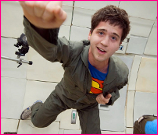 In this activity, students in grades 5 – 7 learn how motion capture technology (mo-cap) enables computer animators to create realistic effects. They learn the importance of center of gravity in animation and how to use the concept in writing an action scene.
In this activity, students in grades 5 – 7 learn how motion capture technology (mo-cap) enables computer animators to create realistic effects. They learn the importance of center of gravity in animation and how to use the concept in writing an action scene.
Read More
Filed under: Class Activities, Grades 6-8, Grades 6-8, Grades K-5, Grades K-5, Lesson Plans | Comments Off on Lesson: That (Motion) Captures It!
Tags: action, Avatar, computer animation, Computer Engineering, film engineering, literacy, mo-cap, motion capture technology, movie technology, Puss 'N Boots, writing
Posted on October 23rd, 2011 by Mary Lord
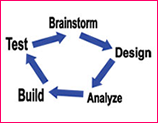 Safer highways. Cool phone apps. Green buildings. Thrilling roller coasters. What do all these things have in common? All bear the stamp of engineering design – a process of brainstorming, building, testing, and refining to create a product, service, or system within time or resource limits.
Safer highways. Cool phone apps. Green buildings. Thrilling roller coasters. What do all these things have in common? All bear the stamp of engineering design – a process of brainstorming, building, testing, and refining to create a product, service, or system within time or resource limits.
Read More
Filed under: Lesson Plans, Special Features | 4 Comments »
Tags: build, Design, Engineering Design, Engineering Design Process, Lesson Plan, Resources for Teachers
Posted on October 16th, 2011 by Mary Lord
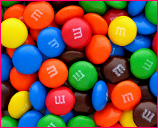 In this activity, students in grades 5 – 11 will use M&Ms to learn about radioactivity, the rate at which an isotope decays, and the concept of half-life. They will count and record the number of decayed “atoms” and graph the results.
In this activity, students in grades 5 – 11 will use M&Ms to learn about radioactivity, the rate at which an isotope decays, and the concept of half-life. They will count and record the number of decayed “atoms” and graph the results.
Read More
Filed under: Class Activities, Grades 6-8, Grades 6-8, Grades 9-12, Grades 9-12, Lesson Plans | Comments Off on Activity: Atomic Candy
Tags: Energy, half life, M&Ms, nuclear energy, Nuclear Engineering, radioactive decay, radioactivity
Posted on October 9th, 2011 by Mary Lord
 In this hands-on activity designed to teach chemical-engineering principles to freshman engineering students at Rowan University, teams of high school students will melt chocolate and coat commercially available cookies, then perform several measurements and calculations. They then will write a lab report that includes nutritional labeling and recommendations for improving the chocolate-coating process.
In this hands-on activity designed to teach chemical-engineering principles to freshman engineering students at Rowan University, teams of high school students will melt chocolate and coat commercially available cookies, then perform several measurements and calculations. They then will write a lab report that includes nutritional labeling and recommendations for improving the chocolate-coating process.
Read More
Filed under: Grades 9-12, Lesson Plans | Comments Off on Lesson: Guilt-Free Chocolate
Tags: Chemical Engineering, Class Activities, Food Industry, Grades 9-12, Lesson Plan, Project ENGAGE
 In this activity, students in grades 7-9 explore the sound-dampening capability of materials by designing and prototyping model sound booths. They learn about how sound is reflected and absorbed, and how it travels through various materials, providing an overview of sound dampening propagation in the context of engineering.
In this activity, students in grades 7-9 explore the sound-dampening capability of materials by designing and prototyping model sound booths. They learn about how sound is reflected and absorbed, and how it travels through various materials, providing an overview of sound dampening propagation in the context of engineering.








 In this activity, teams of kids in grades 4-7 follow the engineering design process to invent a holder for six cans that’s animal-safe, sturdy, convenient, and easy to carry. They learn why discarded plastic rings can be a problem for wildlife and brainstorm animal-friendly ways to package six cans. They then build, test, and redesign their system and discuss what happened.
In this activity, teams of kids in grades 4-7 follow the engineering design process to invent a holder for six cans that’s animal-safe, sturdy, convenient, and easy to carry. They learn why discarded plastic rings can be a problem for wildlife and brainstorm animal-friendly ways to package six cans. They then build, test, and redesign their system and discuss what happened. In this activity, students in grades 4 – 12 will do math like a computer. They will learn the basics of binary number systems by writing and then counting on their hands, and use their knowledge to decode numbers and letters.
In this activity, students in grades 4 – 12 will do math like a computer. They will learn the basics of binary number systems by writing and then counting on their hands, and use their knowledge to decode numbers and letters. In this activity, teams of students in grades 3-12 explore the engineering design process by building model canoes from everyday materials and testing their design in a basin. The canoes must be able to float for three minutes and, for older students, support a load. Students then evaluate the effectiveness of their canoes and those of other teams, and present their findings to the class.
In this activity, teams of students in grades 3-12 explore the engineering design process by building model canoes from everyday materials and testing their design in a basin. The canoes must be able to float for three minutes and, for older students, support a load. Students then evaluate the effectiveness of their canoes and those of other teams, and present their findings to the class. In this game, teams of students in grades 3 – 8 are introduced to the economics and environmental constraints of mining by extracting “ore” (chocolate chips) from purchased “property” (cookies). They will learn that mining requires investment before resources can be extracted, and that there are costs associated with permits, environmental monitoring, and reclamation.
In this game, teams of students in grades 3 – 8 are introduced to the economics and environmental constraints of mining by extracting “ore” (chocolate chips) from purchased “property” (cookies). They will learn that mining requires investment before resources can be extracted, and that there are costs associated with permits, environmental monitoring, and reclamation. In this activity, students in grades 5 – 7 learn how motion capture technology (mo-cap) enables computer animators to create realistic effects. They learn the importance of center of gravity in animation and how to use the concept in writing an action scene.
In this activity, students in grades 5 – 7 learn how motion capture technology (mo-cap) enables computer animators to create realistic effects. They learn the importance of center of gravity in animation and how to use the concept in writing an action scene.  Safer highways. Cool phone apps. Green buildings. Thrilling roller coasters. What do all these things have in common? All bear the stamp of engineering design – a process of brainstorming, building, testing, and refining to create a product, service, or system within time or resource limits.
Safer highways. Cool phone apps. Green buildings. Thrilling roller coasters. What do all these things have in common? All bear the stamp of engineering design – a process of brainstorming, building, testing, and refining to create a product, service, or system within time or resource limits. In this activity, students in grades 5 – 11 will use M&Ms to learn about radioactivity, the rate at which an isotope decays, and the concept of half-life. They will count and record the number of decayed “atoms” and graph the results.
In this activity, students in grades 5 – 11 will use M&Ms to learn about radioactivity, the rate at which an isotope decays, and the concept of half-life. They will count and record the number of decayed “atoms” and graph the results. In this hands-on activity designed to teach chemical-engineering principles to freshman engineering students at Rowan University, teams of high school students will melt chocolate and coat commercially available cookies, then perform several measurements and calculations. They then will write a lab report that includes nutritional labeling and recommendations for improving the chocolate-coating process.
In this hands-on activity designed to teach chemical-engineering principles to freshman engineering students at Rowan University, teams of high school students will melt chocolate and coat commercially available cookies, then perform several measurements and calculations. They then will write a lab report that includes nutritional labeling and recommendations for improving the chocolate-coating process.